Running in the heat is both something I love and loathe. There’s that satisfaction of a good sweat and the frustration of not being able to hit certain paces because the body is working so much harder. Let’s talk about tips for running in the heat and humidity to get you to Fall racing.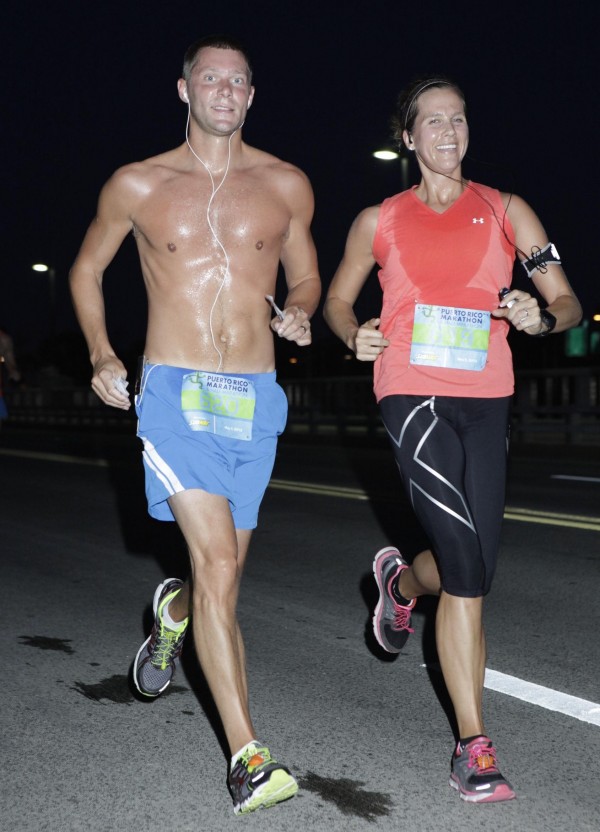
As your core body temperature rises, your heart rate rises which not only increases the perceived effort, but the true effort required by your body to maintain a pace.
And remember that your perception of the temperature will rise quickly in the first 20 minutes of running.
This phenomenon in the winter helps you enjoy a 40 degree day because it feels like 60, but in the summer means you have to truly pay attention to the starting temp to prevent overheating.
After many years of training in Miami, I formed a reluctant truce with running in the heat and humidity.
While we’ll never be best friends, I’ve learned what works to get us through the tougher months summer of runner.
Understanding the Risks of Running in the Heat
Summer is truly the perfect time to get outside and enjoy the sunshine, but before you head out on your run, as a running coach I believe it’s important to understand the risks of running in high temperatures.
While running is an excellent way to stay healthy and active, running in the heat can cause dehydration, heat exhaustion, and heatstroke.
Dehydration is a common risk of running in the heat. When you run, your core body temperature rises, and you start to sweat. Sweating is your body’s way of cooling down, but it also causes you to lose fluids rapidly.
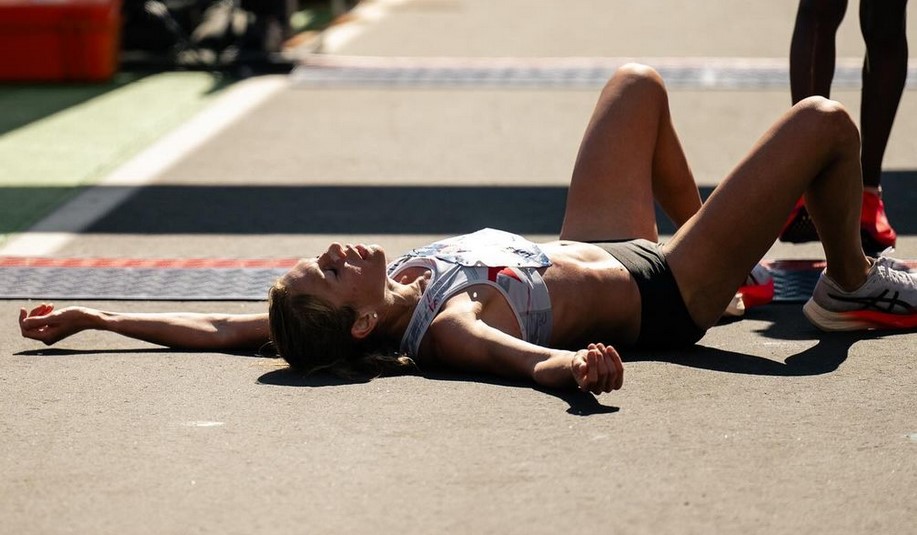
If you don’t replace those fluids, you can quickly become dehydrated. Symptoms of dehydration include dry mouth, thirst, headache, muscle weakness, and fatigue.
If left unchecked, dehydration can lead to heat exhaustion. Heat exhaustion is a more severe form of dehydration and can result in muscle cramps, dizziness, nausea, and in severe cases, loss of consciousness. Heat exhaustion is a serious condition and requires immediate medical attention.
If you feel dizziness or nausea then STOP. You don’t win prizes for hurting yourself. These are early signs of heat exhaustion and should not be ignored.
Also know that people react different to heat. It may bother you more or less than other runners. I often resorted to training on the treadmill when the heat index was 90+ in Miami because that was a safer option for my body.
Heat Stroke and Sunburn
Heatstroke is the most severe form of heat-related illness. It occurs when your body temperature rises to dangerous levels, and you no longer can regulate your temperature. Heatstroke is a medical emergency and can be life-threatening.
Symptoms of heatstroke include high body temperature, confusion, disorientation, and loss of consciousness.
Sunburn is another common risk of running in the heat. Sunburn can cause pain, blistering, and long-term skin damage. When you’re running in the heat, it’s essential to protect your skin by wearing sunscreen, a hat, and sunglasses.
It’s also important to pay attention to the time of day when you’re running. Running in the early morning or late evening when temperatures are cooler can reduce your risk of heat-related illnesses. Plus, it’s crucial to stay hydrated by drinking plenty of fluids before, during, and after your run.
How Much Does Humidity Effect Running?
The truth is it’s not the heat alone that leads to questions about how to run in hot weather, it’s the humidity! It has a major impact on your running and in fact, it’s calculated in the dew point that tells runners how much they need to adjust their paces.
Humidity tells you how much moisture is in the air.
At 100% it should be raining or snowing depending on the air temperature.
At 98% with heat it just feels like you are swimming through the air. Meanwhile a 50% humidity day at 70 degrees is just downright pleasant.
This is where dew point comes in to play.
How to Use Dew Point to Adjust Your Training
Step 1: Add the temperature and dew point together
Step 2: Find your % below
- 100 or less: no pace adjustment needed
- 101 to 110: 0% to 0.5% pace adjustment
- 111 to 120: 0.5% to 1.0% pace adjustment
- 121 to 130: 1.0% to 2.0% pace adjustment
- 131 to 140: 2.0% to 3.0% pace adjustment
- 141 to 150: 3.0% to 4.5% pace adjustment
- 151 to 160: 4.5% to 6.0% pace adjustment
- Really you shouldn’t be running outside at anything higher
Step 3: Use this dew point chart to adjust your pace for easy days and workouts for running humidity.
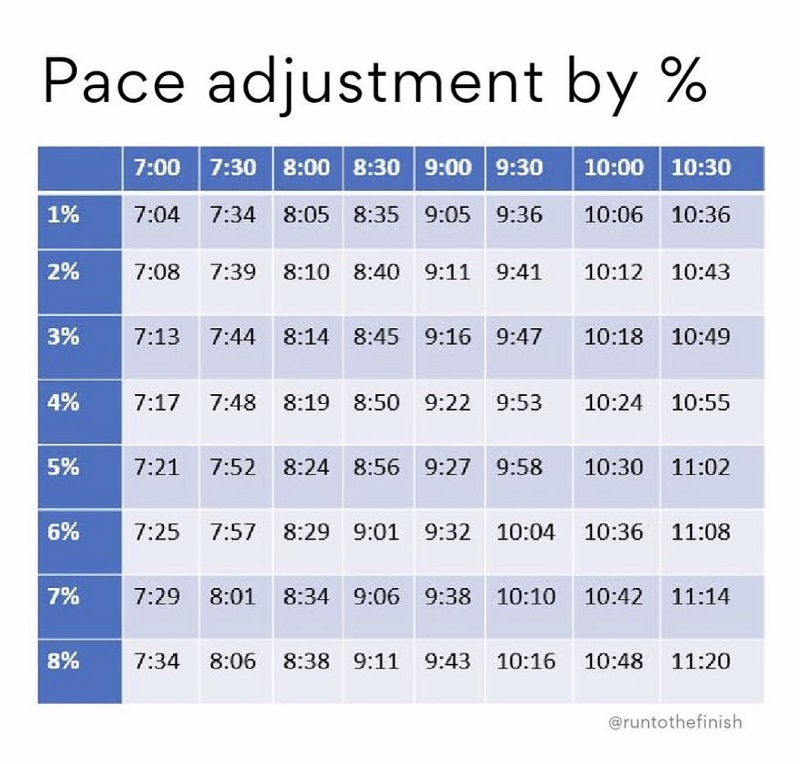
Example hot weather running day adjustment
Temp: 80 degrees Fahrenheit
Dew Point: 80
Total: 160 = 4.5% to 6.0% pace adjustment
Planned pace 10 minute/mile
Adjusted pace 10:27 to 10:36/mile
Why Does it Feel Harder to Run When it’s Hot?
Is running in the heat harder?
Yes!
The heat alone makes your heart rate rise, but with running in high humidity your body can’t cool down because the sweat never evaporates.
- HR increases up to 10 beats per minute in humidity ranging from 50% to 90%
- HR increases by 2 to 4 beats per minute in temperatures from 60°F to 75°F
- HR increases up to 10 beats per minute in temperatures from 75°F to 90°F
There you have it, you aren’t crazy. It doesn’t just feel harder, it really is more work for your body. With that said…there’s a reason, I kept up my campaign for us to move to Colorado!
How to Prepare for Running in the Heat
Over a period of a few weeks your body will begin to adapt to running in the warmer temperatures while that adaptation is happening, there are a few things you can do to help.
For the first few weeks that you start running in warmer weather, take it slow and just listen to your body. It will better adapt to the temperature, but it’s still going to feel harder running in high temps and high humidity.
Choosing the Right Time of Day
While running anytime during the day is better than not running at all, it’s best to avoid running during the hottest part of the day, which is typically between 11 a.m. and 3 p.m.
If possible, plan your run for early morning or late afternoon when temperatures are cooler. This will not only make your run more comfortable, but it will also reduce your risk of heat exhaustion or heat stroke.
Living in Miami, technically evenings were best because there was often a breeze coming in. Here in Colorado, the summer mornings are pure joy…as long as I get done before 11 Am when the sun is now roasting.
Hydrate Properly
Staying hydrated before, during, and after your run is absolutely essential in preventing dehydration.
Aim to drink 16-20 ounces of water with electrolytes at least 30 minutes before heading out on your run, and carry a water bottle or hydration pack with you during your run to stay hydrated.
Plus, incorporating fruits and vegetables high in water content, such as watermelon and cucumbers, can help boost your hydration level.
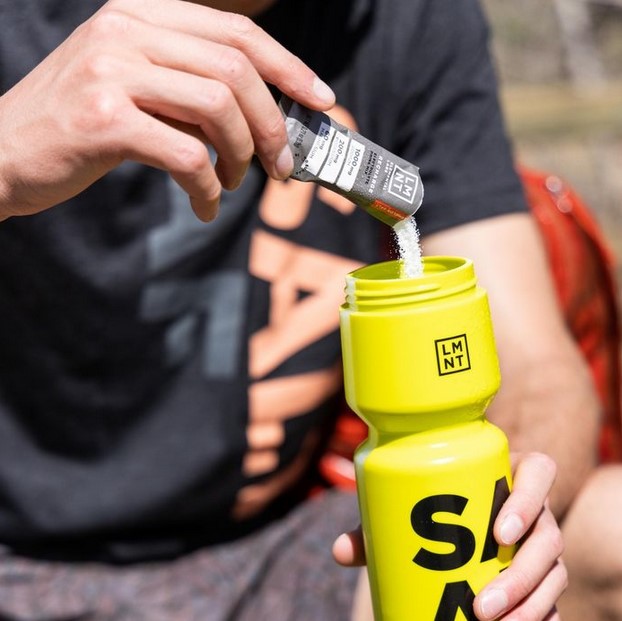
Dressing Appropriately for the Heat
When it comes to dressing for your run, it’s important to choose clothing that will keep you comfortable and cool throughout. I recommend going for lightweight and breathable clothing since they can help keep you cool during your run.
Choose moisture-wicking fabrics that will pull sweat away from your body, allowing you to stay dry and comfortable. Or if you prefer to run without a shirt go for it, we want to help get the sweat off your skin. This allows your body to better cool itself.
Plus, a hat and sunglasses can help protect your face and eyes from the sun’s rays.
It’s also important to protect your skin from the sun’s harmful UV rays. Apply sport sunscreen with an SPF of at least 30 to any exposed skin before heading out on your run. This will help prevent sunburn and reduce your risk of skin cancer.
Pace Yourself
Running in the heat requires you to adjust your pace and expectations. It’s best to slow down and take it easy when running in high temperatures to avoid overexertion and heat-related illness.
These are not the times to be doing some of your hardest workouts. If it’s well above normal then try moving your speed workout inside or remember to run using RPE and not just paces.
When you run in the heat, your body has to work harder to regulate its temperature, which can lead to fatigue and exhaustion. By pacing yourself, you can conserve your energy and stay safe. Pace yourself by checking out the dew point adjustments I mentioned above.
It’s also important to pay attention to the time of day when you run. Try to avoid running during the hottest parts of the day, typically between 10:00 am and 4:00 pm. Instead, schedule your runs for early morning or late evening when the temperatures are cooler.
Incorporate Walk Breaks
Incorporating walk breaks, or sticking to the run walk run method, can help you adjust to running in the heat. Taking regular breaks can help your body regulate its temperature, prevent overheating and dehydration, and keep your energy levels up.
A good rule of thumb is to run for five to ten minutes and then take a one-minute walk break. Repeat this cycle throughout your run.
You can also use your walk breaks to hydrate. Bring a running water bottle with you on your run and take a few sips during your walk breaks. Staying hydrated is crucial when running in the heat, and drinking water regularly can help prevent dehydration and heat-related illnesses.
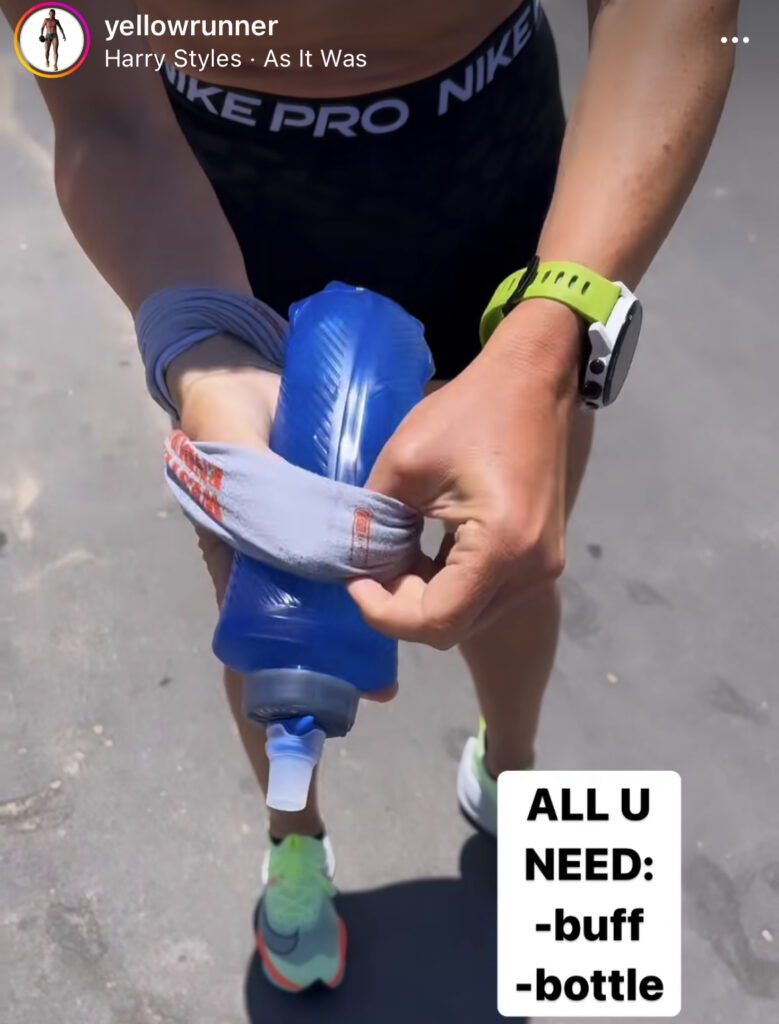
Listen to Your Body
It’s important to listen to your body when running in the heat. If you experience symptoms of dehydration or heat-related illness, it’s best to stop your run and seek shade and water. Ignoring these warning signs can lead to long-term health effects.
Some of the signs of heat-related illness include dizziness, headache, nausea, and muscle cramps. If you experience any of these symptoms, find a shady spot to rest and drink water. You can also use a cool, damp towel to help lower your body temperature.
Remember, running in the heat can be challenging, but with the right adjustments, you can continue to enjoy your favorite activity safely. Take the time to pace yourself, incorporate walk breaks, and listen to your body. By doing so, you can stay healthy and fit all summer long.
Check out my 17 tips below for running in the heat, and trust me they will help! And keep in mind the hot weather running benefits to help you stay motivated during your runs.
8 Running in the Heat Benefits
Most of the big marathons are in the Fall, which means we have to reconcile months heat training as we build our endurance. Which means remember there are hot weather running benefits and searing them in to our minds for when the humid conditions are frustrating us.
Consider these your summer running mental goals.
- Hot weather runs are going to make you so fast in the Fall! As soon as those temps drop, your HR will too.
- “if you need to drop weight fast (Lose 4 Pounds in 12 Minutes!), it’s the best way to do so, with the exception of eating three-days-in-the-sun potato salad.” – Per Ted Spiker of RW (clearly sarcasm!!)
- Ice baths actually start to sound appealing
- Remember this is part of the process to build a stronger body
- It gives you appreciation for the perfect weather days
- It reminds you to be compassionate for the difficulties others face
- Once you stop fighting it, you can put energy in to enjoying the run or finding solutions
- It’s an opportunity to practice pushing through the hard moments like you will on race day
17 Running in the Heat and Humidity Tips
Honestly there’s nothing that’s going to make it better other than your mind, but I’ve covered that already so let’s look at the ways we can try to help the body with hot humid workouts.
Your body can’t dissipate heat as well when temperatures and humidity levels rise, so you have to hydrate, slow it down and smile your ass off. How’s that for coaching, ha ha!!
But here are a few more tips that can help with hot weather running and running in humidity.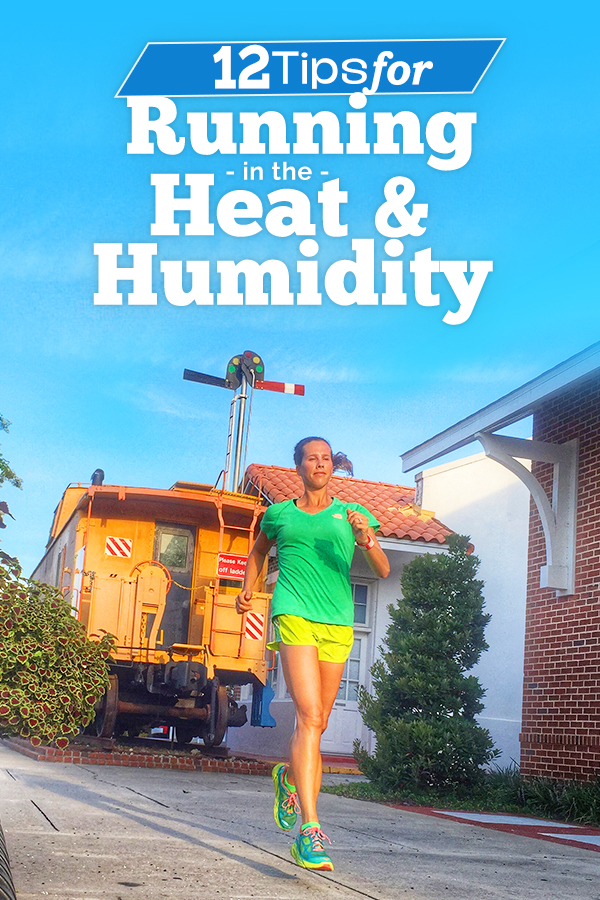
#1 Change Your Mindset Around Hot Weather Running
Awhile back on Facebook, I put out the question “what do you like about summer running?”
This was caveated by the fact that I listened to people whine about winter for months, so surely something must have appealed to them about the new season…
I got one response that I admit has just stuck in my craw:
“Nothing”.
When prodded to find something positive because I believe that would at least make the summer bearable for this person, it just turned in to an ongoing debate of why summer is awful. Here’s the thing, you can’t change the weather, you can’t change your location, being outdoors is all kinds of good for us…so why not just get down and dirty with it.
Here’s the thing, you can’t change the weather, you can’t change your location, being outdoors is all kinds of good for us…so why not just get down and dirty with it.
Sweat your buns off, come home dripping, run through sprinklers and realize that wishing for another season means you are always missing out on what’s here.
- Embrace that this is a different period of training
- Embrace that some runs are going to be harder
- Know that running in the heat makes you faster
You GET to run.
You know running in a mental sport.
Might as well set your mind to be focused on enjoying this time. It’s not going away, happens every year.
2. Run Based on Effort, Not Pace
One of the reasons I like LHR training is I know exactly how hard my body is working and it helps me to put my effort in perspective.
When it’s hot, stop using your pace as a guide and go on effort. This is called rating of perceived effort while running.
This is going to ensure that you don’t run too hard and thus slow down your recovery, compromising your next workout. Instead, if you focus on the effort goal of the run you will get either the benefit of a speed workout or the aerobic benefit of an easy run without going too far.
3. Don’t Underestimate a Breeze
While morning running may be your choice if the evenings carry a breeze it may be worth flipping your schedule. This was the case in Miami…though I was too stubborn to change my schedule.
Start paying attention to weather patterns around you to understand when it might feel best to run. Particularly running in humidity the breeze can make a very high dew point run feel better because it will help wick the sweat from your skin.
4.Utilize Ice Strategically
Because the humidity preventing your body from releasing heat you need to get creative with bringing your core temperature down.
- Wear a hat filled with ice or an ice bandana like the ones from Nathan Sports
- carrying a handheld with ice water {checkout these options for carrying hydration}, the cold in your palm has been shown to help keep your core temperature down
- shoving ice cold sponges down the sports bra works really well too
- other folks have great sherpas that bring them iced sponges
5. Invest in Visors (or very breathable hats)
Back to your body needing to release heat, don’t further trap it under a hat. If you like shading your face try switching to a visor, that allows the heat to still escape while shading your face.
If you are going to do a hat, then look for one that has a mesh top and back, again to release heat.
6. Create Your Own Frozen Gear
Caveat to the above is if you soak your hat in water then place it in the freezer overnight.
Take it out 5-10 min before your run and let your brain soak in the cool throughout your run. {Hey we know running is a mental sport, so trick yourself in to feeling cooler!}
Or be cool like Deena Kastor and try wearing an ice vest like this one prior to your run, which will help to drop your core temperature and may help you run longer before feeling so hot.
You could also try putting one of those injury ice packs down the back of your hydration vest!
7. Pay Attention to Your Breathing
One of the tips I often give runners who have a race at altitude is to train in hot humid weather.
As we showed you above, hot humid air feels thicker due to the amount of moisture in the air. Your body then must work harder to breathe. This makes you feel short of oxygen, which not only increases HR further but makes your effort feel harder.
Try switching to run/walk intervals or slowing down to allow your body to take in more oxygen.
Running with asthma will likely feel tougher on these days.
8. Utilize Sunglasses for More than Your Eyes
While this won’t actually make the humidity any better, it can impact your overall run.
As the sun rises and you being to squint, your brain is working hard to help yours eyes, which has been shown to zap your energy…yup it all adds up!
Relax the face, give your eyes a break! Checkout my best sunglasses for running!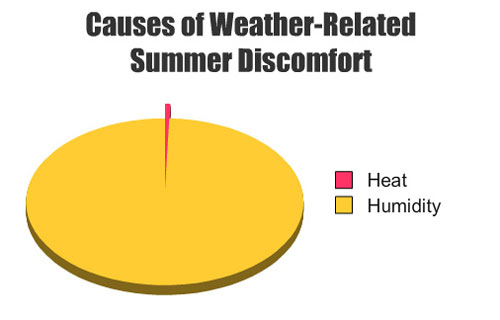
9. Seek Shade – Possibly More Trail Runs
Try to plan out routes that have as much shade as possible if you’re doing longer runs and try to start before the sun comes up.
While the temperature may not be any different, the feeling of that sun beating down on your already overly hot arms, legs and face can make a tough run worse.
- Start keeping notes of which routes have more shade
- Consider moving to the trails, if you have options with a lot of treest
10. Don’t Be Afraid to Shorten the Run
We’re so determined to follow what’s on our training plan that we don’t consider the impact of one workout on the next. If your hot humid run leads to extra fatigue then you will struggle the next day and the next in an endless cycle.
Remember to pay attention to how your body is feeling and give yourself time to adjust to the rising temperatures.
If you’re feeling more fatigue than normal or watching your pace drop a ton, then call it a day. Go do some strength work inside or just rest.
11. Consume electrolytes
I’ve talked before about the importance of electrolytes for runners, but they become even more important as you are both sweating and guzzling water to stay hydrated in the summer heat.
We know that sweating heavily can lead to dehydration, but combine that with drinking just water and you are often washing your body out of those essential minerals
- Sip during each mile
- Gulping high carb sports drinks can lead to stomach discomfort due to the high sugar
- Drink some electrolytes before starting
- Drink more cold water when you finish. You’re less likely to have stomach issues if you stay on top of hydration.
I also reviewed 10 electrolyte powders to help you find the one that’s best for you, particularly folks looking to go low sugar like myself.
12. Adjust Your Start Time
Most of the jokes about how early runners get up stem from summer runs. There is every possibility you’ll need to be out the door by 4AM to get in a marathon long run before it simply gets too hot.
- Slowly adjust your bed time to accommodate early mornings or be open to naps!
- Checkout these tips for Running at Night if you know you’ll simply never wake up early, but could go after work
- Remember marathon training isn’t forever, so focus on why the goal matters right now to make the shift
13. Pre-Workout Caffeine
A few different studies have shown that caffeine prior to a run can improve performance without impacting hydration, important in the summer.
So go ahead and enjoy your morning Espresso or perhaps an iced latte because you’re focused on pre-cooling!
Checkout these pre-workout drink tips, and if you can’t or don’t do the big c, check out these caffeine free energy suggestions.
14. Wear Lightweight Clothing
I’ve had numerous tops that seem to become dresses in a long humid run because they soak up the water and stretch! This is not only bizarre looking, but entirely uncomfortable! We definitely want to avoid cotton, which is going to soak up all your sweat and simply make you hotter.
A few of my favorite pieces:
If you notice that your legs itch while running, the clothing piece is essential. It tends to happen more in the heat!
15. Treadmill Running
If you need to do a really hard effort workout then the treadmill might be your best bet.
You’ll be able to push the intensity without overheating and that’s more beneficial than having to cut a workout short because you’ve created an issue with heat stroke.
16. Don’t Forget to Smile
Seriously!! Studies have shown that smiling will make you feel better because it’s hard to have both positive and negative thoughts at the same time….plus no one is making you run!
You GET to run.
Hey I don’t have to LOVE the struggle, I just have to LEARN from it.
17. Don’t Forget the Sunscreen
It feels like this shouldn’t need to be said, but it’s necessary! Too many runners skip this because of the never ending fun of starting to sweat and having it burn your eyes!
Checkout my best sunscreen for runners to avoid that issue.
And remember that sunburned skin is going to feel hotter. Yup, that means on your next run you have to work even harder to tell your body to cooldown.
Is it Safe to Run in 100 Degrees?
Yes. But should you?
If you’re training for a race in the heat then it’s beneficial to practice running in it. If you’re doing short 30-40 minute runs, also probably not a big deal if you can handle it.
But if you’re doing longer runs or speed workouts, consider heading indoors. There are massive benefits to training on the treadmill, so don’t think that you’re missing out.
Other ways to connect with Amanda
Instagram Daily Fun: RunToTheFinish
Facebook Community Chatter: RunToTheFinish
Sign Up to Receive a Weekly Newsletter with Top Running Tips

